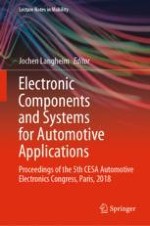2019 | OriginalPaper | Chapter
Contribution of Light and Heavy Vehicles to Reduction of Energy Demand and CO2 Emissions by 2035 in the World
Authors : Jean-Luc Brossard, Gabriel Duquesnoy
Published in: Electronic Components and Systems for Automotive Applications
Publisher: Springer International Publishing
Activate our intelligent search to find suitable subject content or patents.
Select sections of text to find matching patents with Artificial Intelligence. powered by
Select sections of text to find additional relevant content using AI-assisted search. powered by
Abstract
-
The main conclusions of the 2018 study are as follows:
-
The inflection of the road transport CO2 curve of the global road transport sector is allowed with our green scenarios, on the one hand by the progress of the electrification of light vehicle powertrains (VL) and on the other hand, by the expected slowdown in growth dynamics of the VL fleet in China. These two combined effects make possible, after 2023, to offset the effect of the significant increase in the number of Light Vehicles contribution and of the Heavy Vehicle fleet worldwide.
-
Europe and North America account for 90% of CO2 emission reductions. China, Africa and Asia excluding the OECD (including notably India) account for more than 90% of the increases in emissions.
-
Electrified technologies will be the main contributors to the reduction of CO2 emissions over the 2020–2035 period. These technologies have sufficiently high market shares only in scenarios where incentive levers are maintained or put in place over this period.
-
The electrification of the automotive sector, as well as the development of other alternative energy sources—biofuel, natural gas and hydrogen (in the context of carbon-free energy production)—the development of new mobility offers (car-sharing, ride-sharing), access restriction measures, see the progressive ban on the sale of 100% thermal vehicles (eg in Europe), are in 2035 much more effective to bend the curve of CO2 emissions than the tightening of standards emissions.
-
For the nominal scenario, the total share of electro mobility in light vehicle sales in 2035 is estimated at 20% worldwide. The proportion of BEVs represents 12% of sales worldwide (the share of PHEVs being at 8%). In Europe, electro mobility will account 35% sales in 2035 (including 25% BEV and 10%PHEV).
